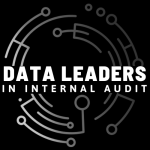
Contract analysis with python
(April 16th, 2024 9AM NY time)
FREE TUESDAY WEBCLASS 9AM EST
Do you have to review lots of contracts during audit fieldwork? Sometimes those reviews might be a little bit monotonous (as contracts are not always the most exciting of documents). Let’s investigate whether or not we can harness the power of AI and python NLP libraries in order to go quicker with this task. We can also revisit our Streamlit application from March and see how to plugin our contract review so that all auditors… even those non-technical can benefit. What other areas could this apply to beyond contracts?
Meet Your Host
Claire Worledge will be your host for this webclass. She will share with you her 23 years experience in data analytics for internal auditors

Ex-big 4 data analytics manager, Certified Fraud Examiner and IT auditor
.. also loves running and bio-hacking!
… author of Data Analytics Secrets


Thanks For All The Amazing Content!
“Thanks for all the amazing content in the webclasses. We have learned quite a lot and this is helping the team to get going with SAP data analytics, as well as challenging our consulting vendors!”
Celia, Head of Internal Audit
What We Cover in Our Webclasses
During our Data Leaders In Internal Audit Tuesday Webclasses we are gaining insights on the following:
How do the Big 4 firms do data analytics?
What does the IIA, ISA, ACFE and ISACA say about data analytics?
What risks should be avoided when using data analytics in internal audit?
How can we train our auditors so that they can successfully use data analytics in their work?
What are the most obvious fraud schemes that data analysts need to be aware of?
What do “normal“ auditors and data analysts need to understand to make an efficient team?
Which data do you need to extract from SAP and how should it be interpreted?
How can we leverage data to see risks in the entity and better prepare the audit?